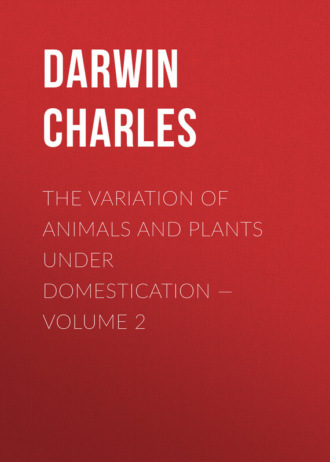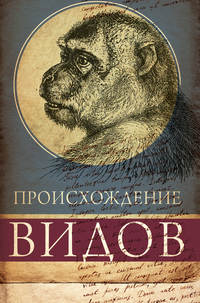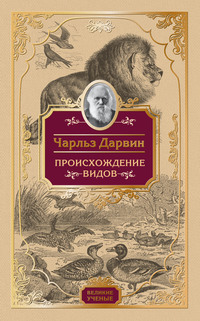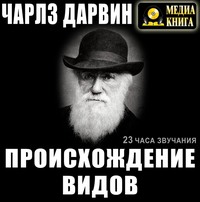
The Variation of Animals and Plants under Domestication — Volume 2
The best proof of what selection has effected is perhaps afforded by the fact that whatever part or quality in any animal, and more especially in any plant, is most valued by man, that part or quality differs most in the several races. This result is well seen by comparing the amount of difference between the fruits produced by the several varieties of fruit-trees, between the flowers of our flower-garden plants, between the seeds, roots, or leaves of our culinary and agricultural plants, in comparison with the other and not valued parts of the same varieties. Striking evidence of a different kind is afforded by the fact ascertained by Oswald Heer (28/8. 'Die Pflanzen der Pfahlbauten' 1865.) namely, that the seeds of a large number of plants, — wheat, barley, oats, peas, beans, lentils, poppies, — cultivated for their seed by the ancient Lake-inhabitants of Switzerland, were all smaller than the seeds of our existing varieties. Rutimeyer has shown that the sheep and cattle which were kept by the earlier Lake-inhabitants were likewise smaller than our present breeds. In the middens of Denmark, the earliest dog of which the remains have been found was the weakest; this was succeeded during the Bronze age by a stronger kind, and this again during the Iron age by one still stronger. The sheep of Denmark during the Bronze period had extraordinarily slender limbs, and the horse was smaller than our present animal. (28/9. Morlot 'Soc. Vaud. des Scien. Nat.' Mars 1860 page 298.) No doubt in most of these cases the new and larger breeds were introduced from foreign lands by the immigration of new hordes of men. But it is not probable that each larger breed, which in the course of time has supplanted a previous and smaller breed, was the descendant of a distinct and larger species; it is far more probable that the domestic races of our various animals were gradually improved in different parts of the great Europaeo-Asiatic continent, and thence spread to other countries. This fact of the gradual increase in size of our domestic animals is all the more striking as certain wild or half-wild animals, such as red-deer, aurochs, park-cattle, and boars (28/10. Rutimeyer 'Die Fauna der Pfahlbauten' 1861 s. 30.) have within nearly the same period decreased in size.
The conditions favourable to selection by man are, — the closest attention to every character, — long-continued perseverance, — facility in matching or separating animals, — and especially a large number being kept, so that the inferior individuals may be freely rejected or destroyed, and the better ones preserved. When many are kept there will also be a greater chance of the occurrence of well-marked deviations of structure. Length of time is all- important; for as each character, in order to become strongly pronounced, has to be augmented by the selection of successive variations of the same kind, this can be effected only during a long series of generations. Length of time will, also, allow any new feature to become fixed by the continued rejection of those individuals which revert or vary, and by the preservation of those which still inherit the new character. Hence, although some few animals have varied rapidly in certain respects under new conditions of life, as dogs in India and sheep in the West Indies, yet all the animals and plants which have produced strongly marked races were domesticated at an extremely remote epoch, often before the dawn of history. As a consequence of this, no record has been preserved of the origin of our chief domestic breeds. Even at the present day new strains or sub-breeds are formed so slowly that their first appearance passes unnoticed. A man attends to some particular character, or merely matches his animals with unusual care, and after a time a slight difference is perceived by his neighbours; — the difference goes on being augmented by unconscious and methodical selection, until at last a new sub-breed is formed, receives a local name, and spreads; but by this time its history is almost forgotten. When the new breed has spread widely, it gives rise to new strains and sub-breeds, and the best of these succeed and spread, supplanting other and older breeds; and so always onwards in the march of improvement.
When a well-marked breed has once been established, if not supplanted by still further improved sub-breeds, and if not exposed to greatly changed conditions of life inducing further variability or reversion to long-lost characters, it may apparently last for an enormous period. We may infer that this is the case from the high antiquity of certain races; but some caution is necessary on this head, for the same variation may appear independently after long intervals of time, or in distant places. We may safely assume that this has occurred with the turnspit-dog, of which one is figured on the ancient Egyptian monuments — with the solid-hoofed swine (28/11. Godron 'De l'Espece' tome 1 1859 page 368.) mentioned by Aristotle — with five-toed fowls described by Columella — and certainly with the nectarine. The dogs represented on the Egyptian monuments, about 2000 B.C., show us that some of the chief breeds then existed, but it is extremely doubtful whether any are identically the same with our present breeds. A great mastiff sculptured on an Assyrian tomb, 640 B.C., is said to be the same with the dog still imported from Thibet into the same region. The true greyhound existed during the Roman classical period. Coming down to a later period, we have seen that, though most of the chief breeds of the pigeon existed between two and three centuries ago, they have not all retained exactly the same character to the present day; but this has occurred in certain cases in which no improvement was desired, for instance, in the case of the Spot and Indian ground-tumbler.
De Candolle (28/12. 'Geographie Botan.' 1855 page 989.) has fully discussed the antiquity of various races of plants; he states that the black seeded poppy was known in the time of Homer, the white-seeded sesamum by the ancient Egyptians, and almonds with sweet and bitter kernels by the Hebrews; but it does not seem improbable that some of these varieties may have been lost and reappeared. One variety of barley and apparently one of wheat, both of which were cultivated at an immensely remote period by the Lake-inhabitants of Switzerland, still exist. It is said (28/13. Pickering 'Races of Man' 1850 page 318.) that "specimens of a small variety of gourd which is still common in the market of Lima were exhumed from an ancient cemetery in Peru." De Candolle remarks that, in the books and drawings of the sixteenth century, the principal races of the cabbage, turnip, and gourd can be recognised: this might have been expected at so late a period, but whether any of these plants are absolutely identical with our present sub-varieties is not certain. It is, however, said that the Brussels sprout, a variety which in some places is liable to degeneration, has remained genuine for more than four centuries in the district where it is believed to have originated. (28/14. 'Journal of a Horticultural Tour' by a Deputation of the Caledonian Hist. Soc. 1823 page 293.)
In accordance with the views maintained by me in this work and elsewhere, not only the various domestic races, but the most distinct genera and orders within the same great class — for instance, mammals, birds, reptiles, and fishes — are all the descendants of one common progenitor, and we must admit that the whole vast amount of difference between these forms has primarily arisen from simple variability. To consider the subject under this point of view is enough to strike one dumb with amazement. But our amazement ought to be lessened when we reflect that beings almost infinite in number, during an almost infinite lapse of time, have often had their whole organisation rendered in some degree plastic, and that each slight modification of structure which was in any way beneficial under excessively complex conditions of life has been preserved, whilst each which was in any way injurious has been rigorously destroyed. And the long-continued accumulation of beneficial variations will infallibly have led to structures as diversified, as beautifully adapted for various purposes and as excellently co-ordinated, as we see in the animals and plants around us. Hence I have spoken of selection as the paramount power, whether applied by man to the formation of domestic breeds, or by nature to the production of species. I may recur to the metaphor given in a former chapter: if an architect were to rear a noble and commodious edifice, without the use of cut stone, by selecting from the fragments at the base of a precipice wedge-formed stones for his arches, elongated stones for his lintels, and flat stones for his roof, we should admire his skill and regard him as the paramount power. Now, the fragments of stone, though indispensable to the architect, bear to the edifice built by him the same relation which the fluctuating variations of organic beings bear to the varied and admirable structures ultimately acquired by their modified descendants.
Some authors have declared that natural selection explains nothing, unless the precise cause of each slight individual difference be made clear. If it were explained to a savage utterly ignorant of the art of building, how the edifice had been raised stone upon stone, and why wedge-formed fragments were used for the arches, flat stones for the roof, etc.; and if the use of each part and of the whole building were pointed out, it would be unreasonable if he declared that nothing had been made clear to him, because the precise cause of the shape of each fragment could not be told. But this is a nearly parallel case with the objection that selection explains nothing, because we know not the cause of each individual difference in the structure of each being.
The shape of the fragments of stone at the base of our precipice may be called accidental, but this is not strictly correct; for the shape of each depends on a long sequence of events, all obeying natural laws; on the nature of the rock, on the lines of deposition or cleavage, on the form of the mountain, which depends on its upheaval and subsequent denudation, and lastly on the storm or earthquake which throws down the fragments. But in regard to the use to which the fragments may be put, their shape may be strictly said to be accidental. And here we are led to face a great difficulty, in alluding to which I am aware that I am travelling beyond my proper province. An omniscient Creator must have foreseen every consequence which results from the laws imposed by Him. But can it be reasonably maintained that the Creator intentionally ordered, if we use the words in any ordinary sense, that certain fragments of rock should assume certain shapes so that the builder might erect his edifice? If the various laws which have determined the shape of each fragment were not predetermined for the builder's sake, can it be maintained with any greater probability that He specially ordained for the sake of the breeder each of the innumerable variations in our domestic animals and plants; — many of these variations being of no service to man, and not beneficial, far more often injurious, to the creatures themselves? Did He ordain that the crop and tail-feathers of the pigeon should vary in order that the fancier might make his grotesque pouter and fantail breeds? Did He cause the frame and mental qualities of the dog to vary in order that a breed might be formed of indomitable ferocity, with jaws fitted to pin down the bull for man's brutal sport? But if we give up the principle in one case, — if we do not admit that the variations of the primeval dog were intentionally guided in order that the greyhound, for instance, that perfect image of symmetry and vigour, might be formed, — no shadow of reason can be assigned for the belief that variations, alike in nature and the result of the same general laws, which have been the groundwork through natural selection of the formation of the most perfectly adapted animals in the world, man included, were intentionally and specially guided. However much we may wish it, we can hardly follow Professor Asa Gray in his belief "that variation has been led along certain beneficial lines," like a stream "along definite and useful lines of irrigation." If we assume that each particular variation was from the beginning of all time preordained, then that plasticity of organisation, which leads to many injurious deviations of structure, as well as the redundant power of reproduction which inevitably leads to a struggle for existence, and, as a consequence, to the natural selection or survival of the fittest, must appear to us superfluous laws of nature. On the other hand, an omnipotent and omniscient Creator ordains everything and foresees everything. Thus we are brought face to face with a difficulty as insoluble as is that of free will and predestination.
END OF VOLUME II





